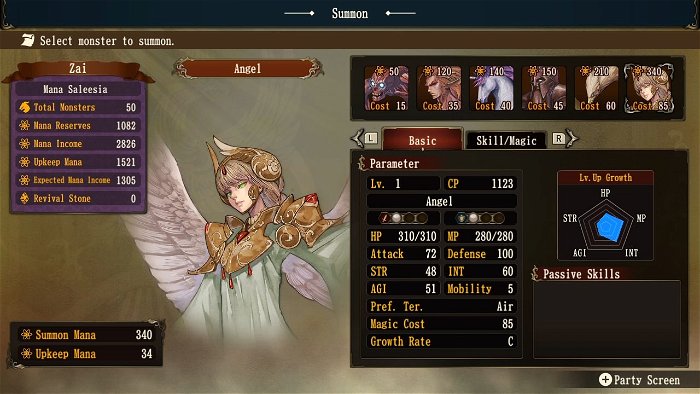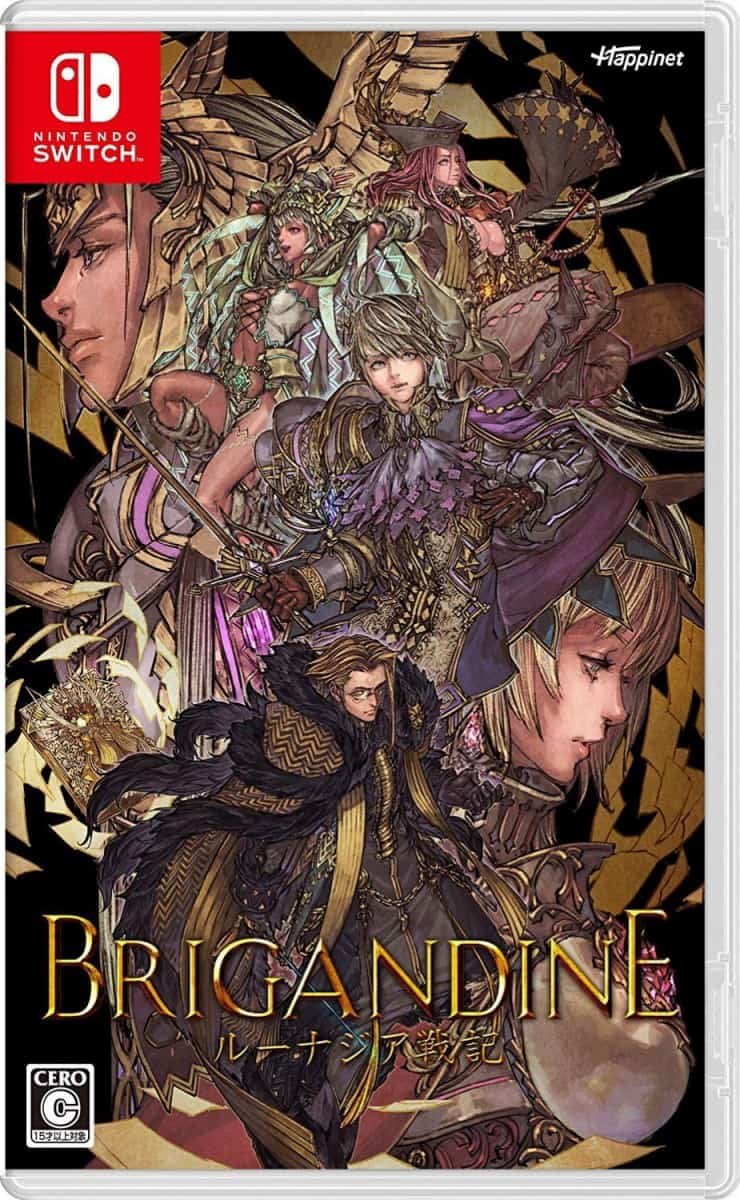Outside of seeing the title on the occasional PlayStation JRPG list, the Brigandine name was almost entirely unknown to me. As a fan of JRPGs though, I was initially excited when I eventually learned that Brigandine: The Legend of Runersia was coming to the Nintendo Switch. Turn-based strategy games like Fire Emblem and Final Fantasy Tactics were big hits for me and I had high hopes that Brigandine would be another title to add to the list. Unfortunately, Brigandine: The Legend of Runersia will likely only appeal a very specific group of JRPG fans, pushing away anyone else in the process.
Brigandine: The Legend of Runersia is a follow-up to the 1998 PlayStation original, Brigandine: The Legend of Forsena. Like its predecessor, Brigandine: The Legend of Renersia is a tactical role-playing game where players take control of one of six opposing nations, commanding an army of knights and summoned monsters players can invade and conquer the other nations with the goal of unifying the continent of Runersia under one flag.

With each nation having its own unique story, the world of Runersia feels expansive in terms of its lore. Players who are new to the series should be made aware though, that Brigandine’s story is a bit different from one usually found in JRPGs. While Brigandine does feature a cast of named characters, the focus of each story revolves around the nations and their political issues. As a result, Brigandine’s story can feel dry and to some, straight up boring.
The visuals of Brigandine: The Legend of Runersia are a bit of a mixed bag. The artwork for character and monster portraits are stunning, utilizing a more detailed and realistic look as opposed to the more typical anime style games like these normally feature. The actual in-game graphics however, while accurate to their 2D art, are much more generic in comparison, and with the game’s maps looking equally flat and empty, Brigandine: The Legend of Runersia fails to present the epic story of war that it’s trying to depict. The game’s well done orchestrated soundtrack does help to make up for the weaker visuals, but no song stands out as a truly memorable. Though the game is almost fully voiced, Brigandine lacks an English dub. I wouldn’t normally consider this a negative point, were it not for the game’s poor English translation. In just the intro alone, I found multiple spelling errors and typos and a lot of lines would read awkwardly.

To anyone who’s never played the first Brigandine game, I strongly recommend playing through The Legend of Runersia’s tutorial before even thinking of attempting its main campaign. Brigandine will throw players straight into the deep end with its gameplay before giving any real lessons on what they should be doing outside of a few screens of text. Even after the tutorial, players will need to make their own mistakes figuring things out but having that basic grasp should help things make a lot more sense. Gameplay can be broken down into two different phases. The first is an organization phase where players can move their troops between their controlled castles and compose squads of a knight and summoned monsters. This is also the phase where players can spend mana to summon additional monster units to their army, so long that they can manage the upkeep fees that come with each turn. Like I mentioned, players who are unfamiliar with the original will need time and patience to figure out their chosen nation’s strengths and weaknesses and efficiently use them.

The latter half of Brigandine: The Legend of Runersia’s gameplay is the attack phase. In comparison to organization phase, this mode is much more straightforward and will feel familiar to turn-based strategy fans. Taking an overhead view, players move their units across hexagonally tiled maps with the goal of attacking and defeating enemy units. These battles are slow, with maps placing the player’s units far enough away from the enemy that it almost always takes at least three turns of movement before any are in range. When battles actually get started, they aren’t anything out of the ordinary. Different types of terrain affect units’ defence and evasion. There aren’t different elevation levels, paired up attacks or anything you might find in a more recent strategy game. Brigandine is deep, but in the most straightforward of ways.
Chances are, if Brigandine: The Legend of Runersia is the kind of game you enjoy, you’ve already bought it. Aside from a basic visual upgrade, Brigandine has done next to nothing to change or grow from what it was twenty years ago and in a way, that’s fine. Brigandine: The Legend of Runersia doesn’t appeal to me and isn’t going to resonate with a lot of people, but for long-time fans still holding onto their original copies and wishing to experience a little more of the classic kingdom management gameplay they enjoyed for the original PlayStation, this may be exactly what they’re looking for.




